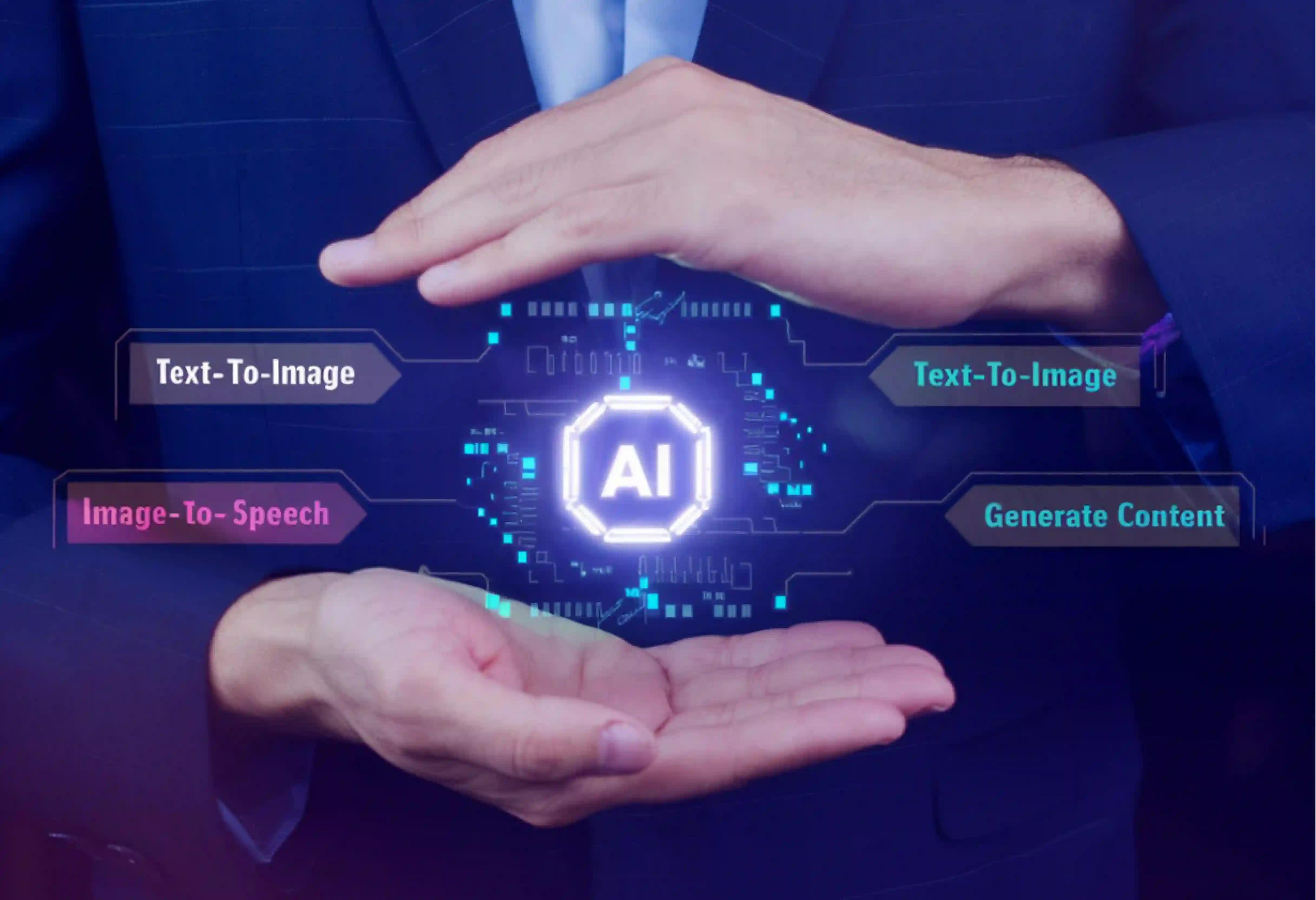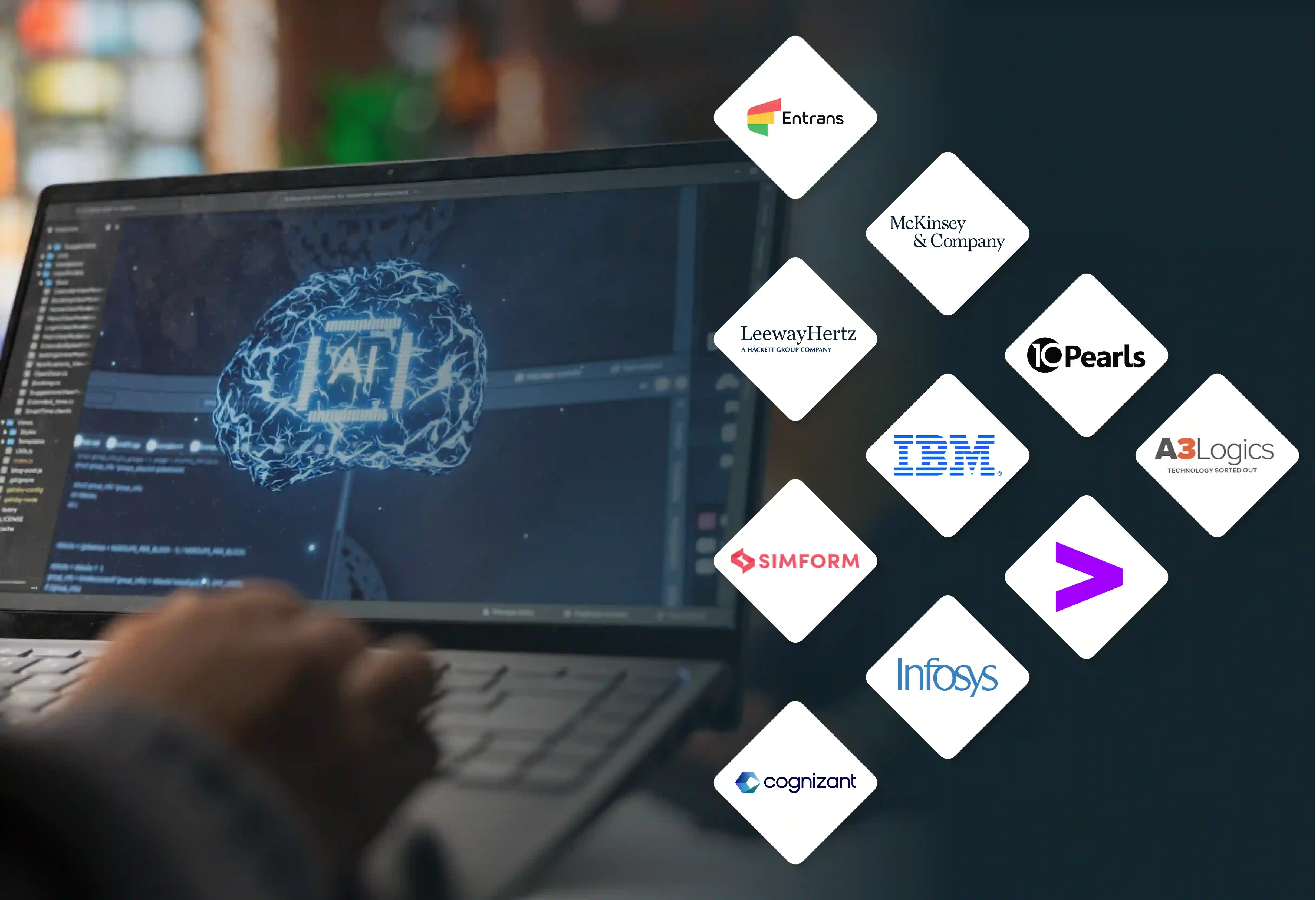


While many companies are piloting Generative AI, very few are successfully taking it live.
This gap is the GenAI Divide. It separates the 95% of companies seeing zero return on their $30-40 billion in investment from the 5% achieving real change.
It’s clear that the problem is not the technology - It is the lack of operational planning!
Making the move from a simple Proof of Concept (PoC) to a fully operational, production-grade system adds enormous value - but it’s easy to burn money in the process.
This is why we will cover everything you need to know about operationalizing Generative AI.
Successfully operationalizing Generative AI is the only way to get a return on the massive investments being made. While 62% of companies use AI agents regularly, analysis shows 95% get zero ROI.
Simple pilots fail because they do not build the trust required for enterprise-wide use.
True operationalization moves beyond personal productivity tools. It tackles the main problem of the Verification Tax. This is the cost of employees double-checking confidently wrong AI outputs.
By building a trusted, dependable, and secure operational engine, enterprises can finally bridge the GenAI Divide. You can operationalize Generative AI to get significant value instead of getting stuck in pilot purgatory.
The enterprise landscape is defined by a stark contradiction. Conflicting market data shows both 74% ROI and a 95% zero return failure rate. Both are true. The important part is to understand this GenAI Divide.
There is an 83% success rate for personal, general-purpose tools (like copilots). But there is a 95% failure rate for the high-value, task-specific, or embedded GenAI systems that promise true business change.
The primary cause of this 95% failure rate is the Verification Tax. Practitioners identify this as the main operational problem.
AI pilots stall because the models are confidently wrong. They produce hallucinations with the same authority as correct facts.
This forces human employees to double-check every single output. This manual process completely removes any potential ROI and destroys user trust.
Simple, consumer-grade tools are sufficient for personal productivity. But they lack the security, accuracy, and governance for main enterprise tasks.
To be truly valuable, AI must be embedded in processes, which requires it to be trusted.
The single greatest differentiator for high-maturity AI companies (the successful 5%) when they operationalize Generative AI is trust.
In 57% of these high-maturity companies, business units trust and are ready to use new AI solutions. This is compared to just 14% in low-maturity companies.
The 95% of companies who fail are those stuck with fragmented, isolated point solutions in pilot purgatory.
The 5% who succeed are those who embed AI into processes. This requires a planning shift to a platform-led method. 70% of enterprises are now prioritizing this. This method is easier to grow as it uses existing, familiar systems (like your CRM or ERP).
When you operationalize Generative AI, it also gives the model secure access to proprietary, enterprise-wide data. This allows for accurate and holistic insights rather than isolated, untrustworthy guesses.
To cross the GenAI Divide, leaders must guide their companies through a structured, 5-phase operational lifecycle. This plan synthesizes multiple expert frameworks. It gives a clear path from initial idea to continuous, in-production value.
Before any code is written, a strict planning filter must be applied. This phase, when you operationalize Generative AI helps established the business case. It weeds out the trivial PoCs that lead to the 95% failure rate. Key steps include:
Once a use case is approved, this phase operationalizes Generative AI, designing the technical and data structure. This is where the basic decisions are made to support a trustworthy system that can grow when you operationalize Generative AI. Key steps include:
When you operationalize Generative AI, this is the iterative development phase where the main system is built. This is an inner loop of prompt engineering and model customization. Key steps include:
Once the inner loop produces a dependable model, it is time to operationalize it. This outer loop when you operationalize Generative AI involves building the strong, secure, and growable system to release the system to users. Key steps include:
Generative AI is not a deploy-and-forget system. When you operationalize Generative AI, this phase is the ongoing operational engine required to maintain value and trust after deployment. This is the engine that fights the Verification Tax. Key steps include:
Once deployed, operationalizing GenAI presents unique, ongoing challenges. In production challenges, when you operationalize Generative AI, include traditional software monitoring tools that are blind to these. Managing these realities is the main function of a mature LLMOps practice.
LLMs are non-deterministic. They demand real-time monitoring to detect silent failures. The primary threat is drift. There are two important types:
1. Prompt Drift (Input Drift):
Happens when user inputs change over time (e.g., new slang, new product questions). These no longer match the training baseline.
2. Output Drift (Concept Drift):
Happens when the vendor (e.g., OpenAI) updates the foundation model. This causes its responses to change unexpectedly, even for the same prompts.
Retrieval-Augmented Generation (RAG) solves the hallucination problem for companies looking to operationalize Generative AI. But it also creates a more complex, three-part failure point. The system's output depends on the user prompt, the LLM, and the retrieved data.
This creates three drift vectors. The LLM can drift (as described above). The user's prompts can drift (e.g., users start asking about new products not in the data). Most deceptively, the data can drift.
If the retrieval logic is changed, or if the underlying documents or embeddings in the vector database are updated, the context stuffed into the prompt will be different.
This will cause the LLM's final output to drift. This happens even if the LLM and the user's prompt have not changed.
Working to operationalize Generative AI creates a new, serious vulnerability: Prompt Injection.
There are two primary threat vectors for an enterprise:
1. Direct Attack:
A malicious user tricks an LLM into sharing its original prompt or bypassing safety protocols (a jailbreak).
2. Indirect Attack:
This more deceptive threat includes an attacker embedding a malicious prompt inside a document (like a PDF resume or a support ticket). When the enterprise's trusted RAG system retrieves this document, the malicious prompt is indirectly injected into the LLM's context. This can potentially damage the entire system.
The computational cost of generative AI can be significant and unpredictable. Cost estimates can vary 500-1,000% from initial projections.
A main LLMOps function is financial governance. This requires using tools to monitor LLM API usage and cost-per-request in real-time, user by user.
Without this, costs can grow out of control. Best practices when looking to operationalize Generative AI include using pay-as-you-go cloud models to avoid over-provisioning. They also include establishing clear data governance policies to manage the large amount of data being processed and stored.
A primary challenge for leaders is Shadow AI. Without central governance, individual business units will create their own undocumented and rogue systems. This creates massive, unmanaged security and compliance risks.
At the same time, leaders must battle legacy IT. Over 50% of companies report that legacy IT systems are a primary blocker to expanding AI. All this happens while handling a complex web of emerging rules.
Enterprises must anchor their plan in a formal risk model. An emerging global standard is the NIST AI Risk Management Framework.
A specific Generative Artificial Intelligence Profile was also released to help companies identify unique risks. An actionable first step is to set up an AI Ethics Board within 30 days.
High-performing teams do not use a single, monolithic tool. They build modular and composable LLMOps stacks.
When looking to operationalize Generative AI this allows teams to swap components as better technology emerges. The Build vs. Buy decision is important.
To defend against new attacks like Prompt Injection, a multi-layered defense is required. First, deploy LLM Firewalls or Guardrails.
This is a new class of security tool that includes a specific filter to detect and block jailbreak attempts. Second, also look to sanitize and validate all inputs and outputs when you operationalize Generative AI.
Protecting proprietary data is a primary concern for 95% of enterprises. This requires strong internal controls like Role-Based Access Control (RBAC).
It also means encrypting all data at rest and in transit, and masking sensitive data in non-production environments. Importantly, it also requires external vendor management.
A main governance challenge for RAG is handling documents that contain Personally Identifiable Information (PII).
The simplest and most common method is Prompt Redaction. This includes using a privacy-preserving tool to scan and redact the prompt. This masks out PII data before sending it to the API provider.
The final best practice is to create a closed-loop system that continuously improves. The Verification Tax that kills 95% of projects is the direct cost of a system that lacks an accuracy flywheel and trust.
By using a strong LLMOps monitoring (Phase 5) and actively capturing user feedback (both via explicit thumbs up/down buttons and implicit retry pattern metrics), you create a Human-in-the-Loop (HITL) process.
If you’re wondering how to operationalize Generative AI without the technical experts in-house, engaging Generative AI experts during your transition from Proof of Concept to production can help simplify the entire process. At Entrans, our GenAI specialists bring extensive knowledge of data modeling, RAG structure, LLMOps, DAX functions, and Power Query. Meaning, your data validation and migration process can be done a lot quicker and with far fewer issues.Learn how our team of certified Generative AI experts can help you go live quicker. Curious to know more? Book a free 20-minute consultation call!
Most projects get stuck in the pilot phase because of the Verification Tax. This means employees spend more time checking confidently wrong AI outputs than they save. This process removes any potential return on investment. It also destroys user trust in the system. The 95% failure rate is an operational and trust problem, not a technology one.
RAG stands for Retrieval-Augmented Generation. It is the main technical method for making GenAI trustworthy in a business. It connects the AI model to the company's own private, up-to-date information. This information includes documents in a CRM or ERP. This connection bases the model in facts. This greatly lessens hallucinations and allows the model to give accurate, context-aware answers.
LLMOps (Large Language Model Operations) is a new discipline. It manages the unique lifecycle of AI models in production. Traditional MLOps tracks simple metrics. LLMOps is different because it must work in an unclear, text-based world. It monitors for text quality and complex issues like drift.
The biggest new risk is Prompt Injection. This is when a user tricks the AI with a special prompt to bypass its safety rules. A more dangerous indirect attack can hide a malicious prompt inside a trusted document. The AI then reads and executes that prompt. Defenses include new LLM Firewalls and strictly limiting the AI's permissions.
The first step is to establish a centralized governance body. This is often led by the CIO or a new Chief AI Officer. This group should use a formal framework, like the NIST AI Risk Management Framework. This helps create clear rules for data security and access. This prevents Shadow AI.

